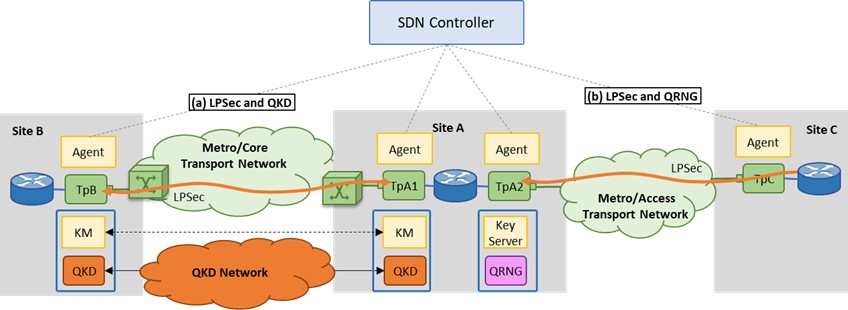As part of our ongoing research within the Allegro project, we’ve been exploring innovative approaches to secure high-speed optical networks using quantum-generated keys. Our latest work focuses on encrypting optical signals, such as 16-QAM modulated signals, using keys derived from a Quantum Key Distribution (QKD) or Quantum Random Number Generator (QRNG) source.
We analyzed three different deployment scenarios based on how keys are made available at the receiver side — each with its own security trade-offs and operational considerations.
📌 Scenario A: Both transmitter and receiver nodes are within the QKD network perimeter (e.g., metro/core sites). Here, truly random quantum keys are securely distributed via local Key Managers (KMs). An SDN controller handles lightpath provisioning and LPSec configuration, while a KxF header ensures encryption/decryption synchronization.
📌 Scenario B: Only one end of the optical connection resides within a QKD-covered site. The other uses a local QRNG for key generation, with encrypted key synchronization managed via the LPSec KxF header. This setup extends the security perimeter beyond the metro/core to access networks — a crucial requirement for future quantum-secure infrastructure.
These scenarios address the inherent challenge of QKD’s limited key generation rates by integrating key expansion mechanisms and evaluating trade-offs between security and scalability.
Big thanks to the team for pushing the boundaries of quantum-secured optical transport! 💡🔒
👉 If you’re working on similar topics or curious about quantum-enhanced network security, let’s connect and exchange ideas.
#QuantumSecurity #QKD #QRNG #OpticalEncryption #AllegroProject #SDN #Cybersecurity #Photonics #NetworkInnovation

